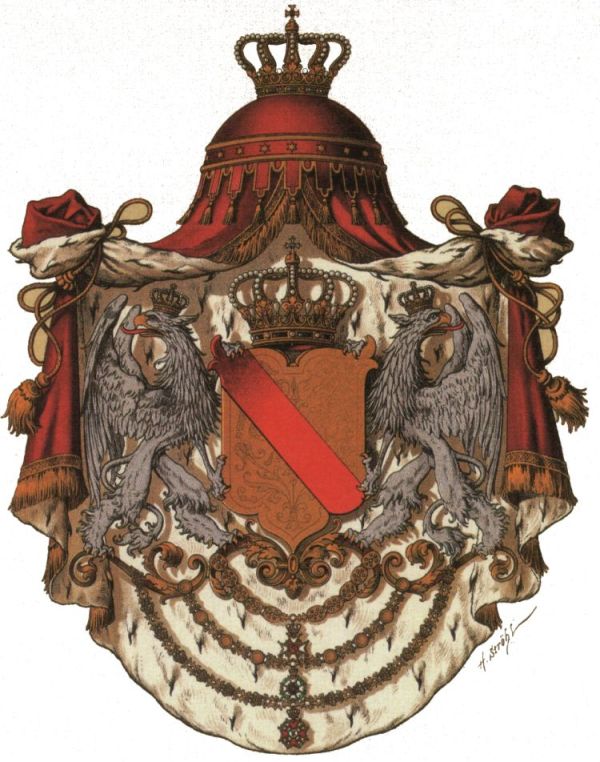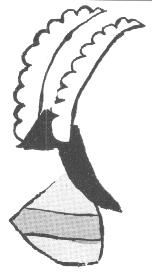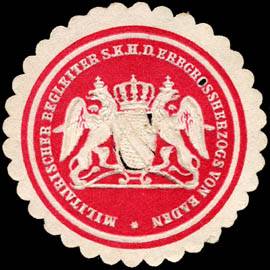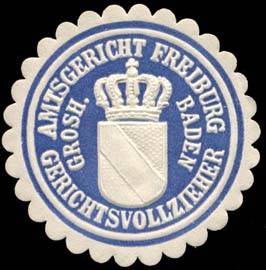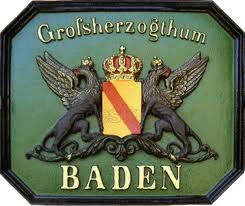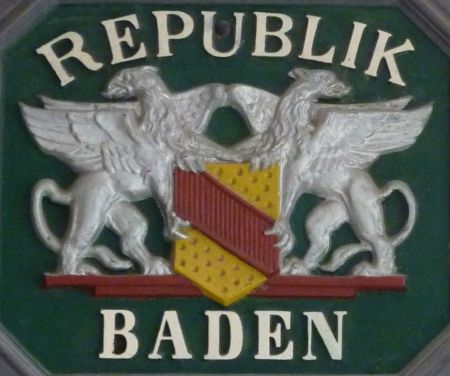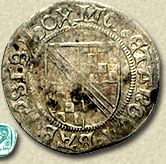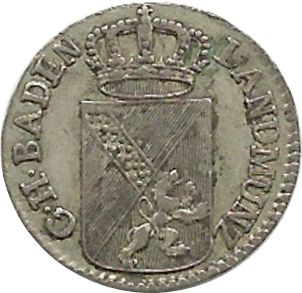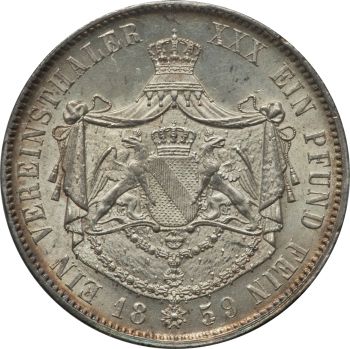Baden (State): Difference between revisions
Knorrepoes (talk | contribs) m (Text replace - "[[Literature" to "{{media}} [[Literature") |
Knorrepoes (talk | contribs) m (Text replace - "{|width="100%" style="color:black; background-color:#ffffcc;" |width="15%"|50 px|left |width="70%" align="center" |'''Heraldry of the World<br/>Civic heraldry of Germany - [[Deutsche Wappen|Deutsche Wappen (Gemeind) |
||
| Line 1: | Line 1: | ||
{ | {{de}} | ||
'''BADEN''' | '''BADEN''' | ||
Revision as of 09:22, 25 January 2015
This page is part of the German heraldry portal Deutsche Wappensammlung |
Heraldry of the World |
|
German heraldry:
|
Selected collector's items from Germany:
|
BADEN
| The arms of the Grand-Duchy of Baden (1830-1918) |
Origin/meaning
Baden was a County in South-Western Germany. From 1806-1914 it was a Grand-Duchy and between 1918 and 1933 a semi-independent Free-State. Since 1945 it is a State of the German Federal Republic. In 1952 it was combined with Württemberg-Baden and Südwürttemberg-Hohenzollern to Baden-Württemberg.
The Markgraves of Baden are descendents of the Zähringer dynasty, that were named after the castle Zähringen near Gundelfingen. They named themselves in the beginning of the 12th century after the castle Baden, in the present city of badenbadBaden-Baden]]. The original arms of the Zähringer dynasty was a red eagle on gold. Whether the Counts of Baden have used this eagle is not clear. In any case, from the beginning of the 13th century the red bend is used as the arms of Baden. The meaning or origin of this bend is not known. As crest two buffalo horns are used.
| The arms of Baden from a 13th century roll of arms |
In the 16th century the arms were enlarged with two griffins as supporters. A little later the Baden arms followed the German tradition in adding different quarters of acquired territories. At first the Baden arms were placed on a quartered shield of Badenweiler, Rötteln, Badisch-Breisgau and Neuenburg (now Neuchâtel in Switzerland). The latter was replaced in 1580 by the wing of the Lordship Sausenberg. At the end of the 18th century the number of fields had increased to 18.
After the creation of the new Grand-Duchy of Baden in 1806, the tradition continued. The new arms from 1807 were a heraldic monster :
The actual arms of the Grand-Duchy were a shield divided per bend sinister of purpure and red. In the upper part (on the purpure field) a gold bend was placed, in the lower red field a golden lion. The actual arms of Baden red on gold were thus replaced by gold on purpure. The division red and pupure is against the heraldic rule of colour. The lion should represent the lion of Zähringen, for which is no historical evidence. The main shield thus contained three errors !
These arms were placed as an escutcheon on the mainshield, which consisted of 29 fields. These represented 13 wordly territories (Baden, Hochberg, Kurpfalz, Breisgau, Sausenebrg, Eberstein, Rötteln, Mahlberg, Badenweiler, Lahr-Geroldseck, Bonndorf, Hauenstein and Hanau-Lichtenberg), 9 former territories that belonged to monasteries or bishop-states (Bruchsal, Ettenheim, Konstanz, Gengenbach, Odenheim, Salem, Petershausen, Reichenau, Öhringen), the cross of the German Order and the Order of Malta as these also used to have possessions in the new Grand-Duchy, as well as 5 arms of cities (Offenburg, Konstanz, Überlingen, Pfullendorf and Villingen).
If not enough, the main shield was surrounded by the arms of 10 more territories, each crowned with the proper crown : Fürstenberg, Heiligenberg, Tengen, Klettgau, Hagenau, Neudenau-Billigheim, Krautheim, Wertheim, Dürn and Leiningen-Mosbach.
Finally, these arms were held by a griffin and a lion (for Zähringen) as supporters and crowned by the Grand-Ducal crown. The whole could be placed on a mantle.
In 1830 these very complicated arms were replaced by the arms above; a simple shield with the historical arms of Baden, with two griffins as supporters and the chains of the Orders of which the Grand-Dukes were members. These arms were used until 1918.
| The large arms on a seal, around 1900 |
The small arms on a seal, around 1900 |
| The small arms on a seal, around 1900 |
The new Free-state (or Rebublic) removed the chains and mantle, but otherwise the arms were the same. From 1945-1952 only the shield was used, without crown and supporters.
| The arms of the Free State or Republic of Baden, 1920s. |
The arms of the Free State or Republic of Baden, 1920s. |
The arms of Baden are used in many civic arms of towns and municipalities, such as Baden-Baden, Durmersheim, Eichstetten am Kaiserstuhl, Emmendingen, Eppingen, Ettlingen, Malterdingen, Neuenburg am Rhein, Pforzheim, Sasbach, Schopfheim and many more. Outside Germany the arms appear in the arms of Vichten in Luxembourg. See here for more arms with the Baden arms.
The arms of Baden on coins (source: http://www.numista.com)
| 1504 |
1806 |
1859 |
| 1871 |
Contact and Support
Partners:
Your logo here ?
Contact us
© since 1995, Heraldry of the World, Ralf Hartemink 
Index of the site
Literature : Stadler, K. : Deutsche Wappen - Bundesrepublik Deutschland. Angelsachsen Verlag, 1964-1971, 8 volumes; Kalckhoff, A. : Heraldik aus 9 Jahrhunderten. Zur geschichte des Familienwappens. Pro Heraldica, Stuttgart, 1984 (pictures); Schurdel, H.D. : Flaggen und Wappen Deutschland, Battenberg, Augsburg, 1995.


